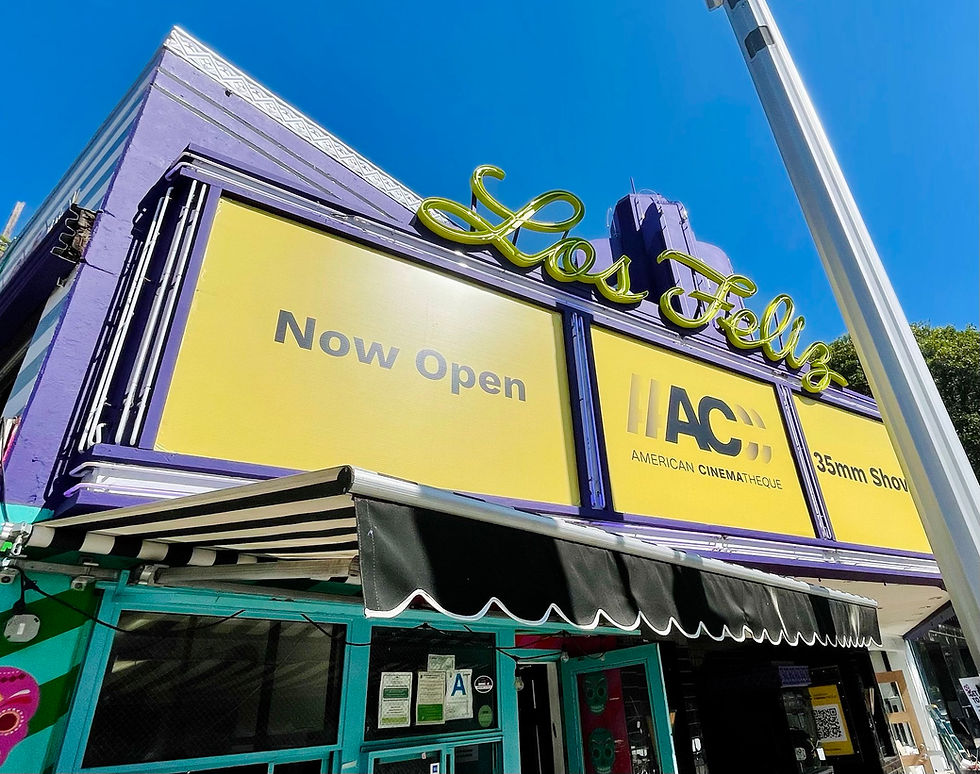The New Beverly Cinema
- Carrie Specht

- Aug 28, 2016
- 2 min read

When I first moved to Los Angeles in 1998 I knew the New Beverly as a kitschy little movie house that featured old movies in clever double feature lineups. I use to drive by just to see the latest marquee announcing such match ups as The Deer Hunter showing with Bambi, or The Evil Dead with Life is Beautiful. I’m making these pairings up, but you get the idea. As the years passed the New Bev also became known for presenting great foreign classics as well as indie features you weren’t going to see any place else (mostly because the film usually didn’t have distribution and the filmmakers were renting out the screen for the night). It was a cool, hip place with an ever changing eclectic lineup you could count on for variety - an ideal oasis for young filmmakers looking to get as much exposure as possible to cinema in all its variations.
Unfortunately, audiences weren’t consistently enthusiastic about the programming and overhead costs caught up with the owners. Quentin Tarantino was a big fan of the theater and came to the rescue as a partner, later taking over completely. The one thing that has remained the same all these years besides the great popcorn is the consistent presentation of 35mm film, and ONLY 35mm film. Even though the studios have announced that they will no longer make prints for theatrical presentation, Tarantino is committed. A quote from the theater’s website says it all, "I want the New Beverly to be a bastion for 35mm films. I want it to stand for something. When you see a film on the New Beverly calendar, you don’t have to ask whether it’s going to be shown in DCP or in 35mm. You know it’s playing in 35 because it’s the New Beverly."
If you’re reading this post then you already know how important 35mm is to a true cinephile. It’s like the difference between vinyl and CD for music aficionados. When it comes to authenticity in representing the true vision of filmmakers of a certain era, nothing else will do, no matter how “clear” and “lifelike” manufacturers can make a transfer appear. Simply put, digital just lacks depth and the original soul possessed by a 35mm produced film is lost. True, many film goers just don’t know the difference. And I am sad for them. But as long as there are those who swear by the artistic beauty of the medium you can run through your hands and see frame by frame, the New Beverly will be there to fulfill their need, their desire to see the flickering shadows of the flawed and imperfect format. Viva la New Beverly!




Comments